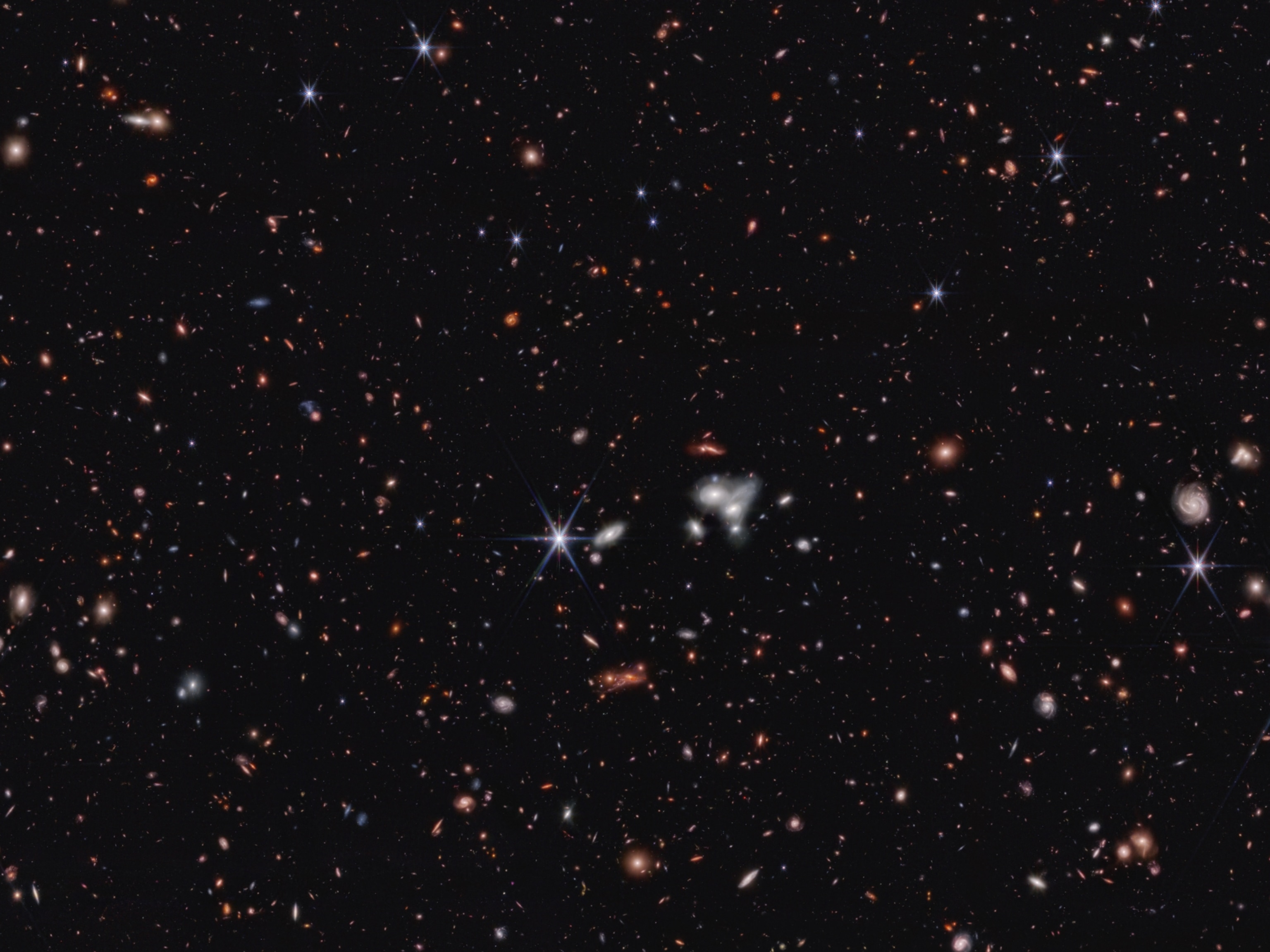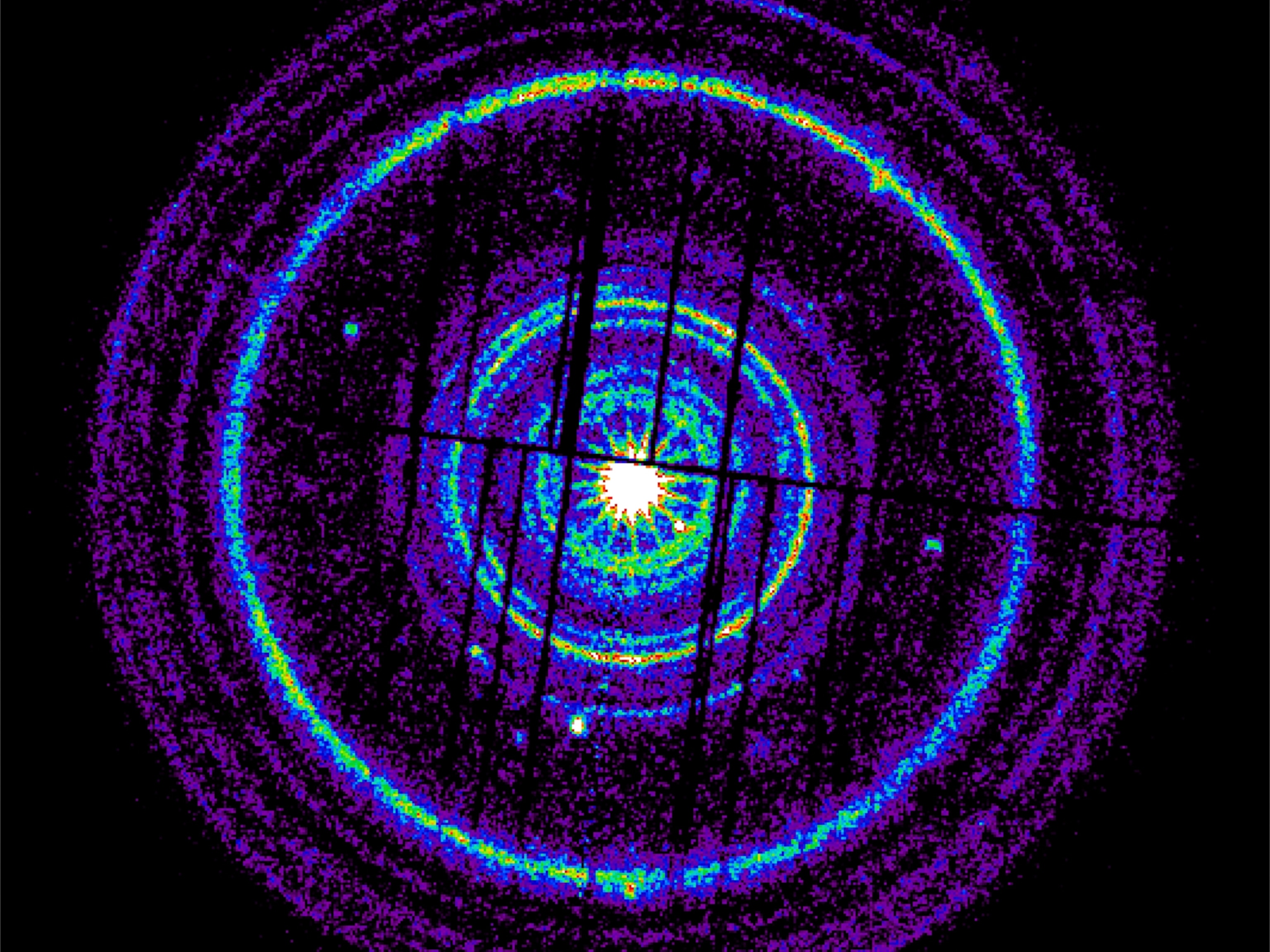Here's how astronomers found one of the rarest phenomenons in space
The source of a huge burst of radiation from deep space that hit Earth in 2023 likely was one of the rarest and most bizarre objects in the universe: a magnetar.

On November 12, 2023, a huge burst of gamma radiation hit the European Space Agency’s orbiting INTEGRAL satellite. The rush of radiation lasted just one-tenth of a second, but immediately, an alert went out to astronomers around the world. Working as fast as possible, they turned their instruments toward the point in deep space the gamma rays had come from to see if they could find its source. And that’s when things started to get very strange indeed.
Gamma rays are incredibly bright, energetic jets that come from deep space and, on occasion, hit Earth. They have been detected since the 1960s, and astronomers thought they knew enough about the phenomenon to suspect this gamma ray was emitted by two neutron stars colliding far off in space. Neutron stars are the incredibly dense cores of dead stars, and their collisions can be explosive and send out gamma rays and other radiation, followed by gravitational waves.
“If this had to been a normal gamma ray burst, what people would have expected is to see the so called afterglow,” Sandro Mereghetti, a researcher at Italy’s Istituto di Astrofisica Spaziale e Fisica Cosmica Milano, says. “Even short bursts of gamma rays then emit radiation in X-rays in the optical band and in the radio band that lasts for several hours or even days.”
But that’s not what the astronomers found at all.
Rare origins
The X-rays were nowhere to be found. So Mereghetti and a team of fellow scientists hypothesized that the source of the gamma radiation in this instance might in fact be one of the rarest and most powerful explosions in the known universe: a giant flare emitted from a magnetar, a kind of neutron star that is highly magnetic and, despite being the size of a small city, is the same mass as our sun.
Magnetars, which like other neutron stars are birthed from the collapse of much more giant stars, have extremely powerful magnetic fields—thousands of times stronger than those found on other neutron stars—for reasons that still mystify astronomers.
“Magnetars are powered by the decay of the magnetic field,” Mereghetti explains. “And this causes a lot of heat, so these are hot objects from this process, which also causes the emission of giant flares.” What happens, he says, is that the magnetic fields finally snap, a process similar to what happens on the sun when its magnetic fields snap and burp out coronal mass ejections—flares of energy that can cause auroras here on Earth.
These ejections from our sun are powerful—often consisting of billions of tons of plasma. But they pale in comparison to a magnetar giant flare, which can emit, in just a hundredth of a second, the same amount of energy put out by the sun over the course of a million years.
“Neutron stars are the densest matter in the universe, so if you keep adding mass, eventually that will collapse to a black hole, which isn’t matter anymore,” Eric Burns, an assistant professor of astrophysics at Louisiana State University who was not involved in the new work, says. “So that extreme density allows that object to house incredibly powerful magnetic fields. If it wasn’t that dense, the magnetic fields would just rip the star apart.”
Those unique conditions make magnetars rare and their giant flares even rarer. Gamma ray bursts are detected roughly once a month, Mereghetti says, but only three magnetar giant flares have been spotted from within the 100 billion stars within the Milky Way in the last 50 years. Spotting the flares from outside our galaxy is even harder, as you need to be pointing the detector in the right direction and be able to differentiate their radiation from other sources of gamma ray explosions.
Yet for the first time, Merenghetti and his colleagues have managed to do just that. Their hypothesis—a magnetar—seems to have borne fruit and given them a scientific first.
Lives of stars
In a new paper published in Nature, Mereghetti and his team lay out their case that the eruption detected in November, 2023 was the result of a giant flare from a magnetar located in the M82 galaxy, which is 12,000 light-years away.
“In the past, there have been a few cases of tentative discoveries of giant flairs in external galaxies, but the one that we report is much more convincing just because it's the most localized, with a much better procedure,” he says.
The results have astronomers “exceptionally excited,” says Burns, particularly because of the origin in M82. Due to the effects of its proximity to another galaxy, M82 is a nursery of sorts to massive stars, which are 10 times more common there than in the Milky Way. It is also a place where stars live fast and burn bright, making it a particularly curious object for study.
“We believe that the population of magnetars in M82 is quite large, so maybe it's not a coincidence that this event was discovered in this galaxy and not in another one,” says Mereghetti.
His team’s discovery was a fortuitous one: the INTEGRAL satellite just happened to be looking in the general vicinity of M82 when the gamma radiation arrived. The satellite itself is due to soon reenter the Earth’s atmosphere, with no replacement yet scheduled for launch. In the meantime, Mereghetti said more attention will be paid to the M82 galaxy in the hopes that more giant flares can be spotted. In turn, these can offer astronomers precious data on the physics of intense magnetic fields and the life cycle of stars.
“Stars are born, they live, they die, they explode and produce another star,” he says. “There is a cycle, kind of a biology in the universe, and magnetars are one of these elements in the evolutionary structure of the lifetime of stars.”
You May Also Like
Go Further
Animals
- What rising temperatures in the Gulf of Maine mean for wildlifeWhat rising temperatures in the Gulf of Maine mean for wildlife
- He’s called ‘omacha,’ a dolphin that transforms into a man. Why?He’s called ‘omacha,’ a dolphin that transforms into a man. Why?
- Behind the scenes at America’s biggest birding festivalBehind the scenes at America’s biggest birding festival
- How scientists are piecing together a sperm whale ‘alphabet’How scientists are piecing together a sperm whale ‘alphabet’
Environment
- What rising temperatures in the Gulf of Maine mean for wildlifeWhat rising temperatures in the Gulf of Maine mean for wildlife
- He’s called ‘omacha,’ a dolphin that transforms into a man. Why?He’s called ‘omacha,’ a dolphin that transforms into a man. Why?
- The northernmost flower living at the top of the worldThe northernmost flower living at the top of the world
- This beautiful floating flower is wreaking havoc on NigeriaThis beautiful floating flower is wreaking havoc on Nigeria
- What the Aral Sea might teach us about life after disasterWhat the Aral Sea might teach us about life after disaster
History & Culture
- This thriving society vanished into thin air. What happened?This thriving society vanished into thin air. What happened?
- These were the real rules of courtship in the ‘Bridgerton’ eraThese were the real rules of courtship in the ‘Bridgerton’ era
Science
- How stressed are you? Answer these 10 questions to find out.
- Science
How stressed are you? Answer these 10 questions to find out. - Does meditation actually work? Here’s what the science says.Does meditation actually work? Here’s what the science says.
- How to cope with stress at work—and avoid burning outHow to cope with stress at work—and avoid burning out
- Is the 5-second rule true? Science finally has an answer.
- Science
- Gory Details
Is the 5-second rule true? Science finally has an answer.
Travel
- The 'original' High Line is in Paris — here's how to walk itThe 'original' High Line is in Paris — here's how to walk it
- These rollerskaters take over Paris every Friday nightThese rollerskaters take over Paris every Friday night
- The story of this French village is set in stone — literallyThe story of this French village is set in stone — literally
- How to spend a long weekend in Zagreb, Croatia
- Paid Content
How to spend a long weekend in Zagreb, Croatia







